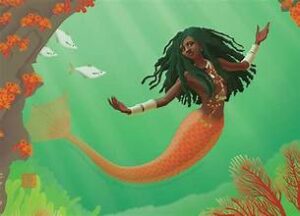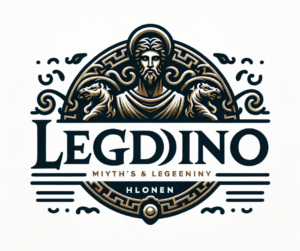
Introduction
Mami Wata, often depicted as a mermaid or water spirit, holds a significant place in African mythology. Revered and feared, she embodies the complexities of water as a source of life and danger. Her stories span across various African cultures and have even influenced diasporic communities around the world. This article delves into the enigmatic tales of Mami Wata, exploring her origins, cultural significance, and the intricate ways she is revered and depicted in African folklore.
Origins of Mami Wata
The origins of Mami Wata are as diverse as the cultures that worship her. Her name, derived from the English “Mother Water,” hints at her domain and maternal aspects. Historical accounts suggest that Mami Wata’s roots may lie in ancient African water deities, with influences from indigenous beliefs, colonial encounters, and cross-cultural exchanges. Over time, her image and lore have evolved, integrating elements from various African traditions and foreign influences.
Cultural Significance
Mami Wata is more than just a mythical figure; she represents the dual nature of water—nurturing and destructive. In many African cultures, water bodies are considered sacred, and Mami Wata, as their guardian, is both a benevolent provider and a formidable force. She is often associated with fertility, prosperity, and healing, but also with seduction, danger, and unpredictability. This duality makes her a powerful symbol of the delicate balance between humans and nature.
Depictions of Mami Wata
The visual representations of Mami Wata vary widely, reflecting the rich tapestry of African art and storytelling. She is commonly portrayed as a beautiful mermaid with long flowing hair, often holding a mirror or a comb. These symbols emphasize her connection to water, beauty, and femininity. In some depictions, she appears as a snake charmer or a figure surrounded by marine life, highlighting her dominion over aquatic realms. The diversity in her portrayal underscores her multifaceted nature and the wide-reaching influence of her legend.
Rituals and Worship
Worship practices dedicated to Mami Wata are equally diverse and vibrant. Followers believe that appeasing her can bring blessings of wealth, health, and protection. Rituals often involve offerings of perfume, jewelry, and other luxury items, symbolizing her association with beauty and prosperity. Ceremonies may include music, dance, and elaborate displays of devotion, reflecting the celebratory yet reverent approach to honoring this powerful spirit.
Mami Wata in the Diaspora
The influence of Mami Wata extends beyond the African continent, permeating the cultures of African diasporic communities around the world. In the Caribbean, South America, and even parts of North America, her legend persists, blending with local beliefs and traditions. This transcontinental reach of her mythology showcases the enduring nature of her tales and the adaptability of her image across different cultural landscapes.
Mami Wata in Contemporary Culture
In modern times, Mami Wata continues to inspire artists, writers, and filmmakers. Her story has been adapted into various media, from literature and visual arts to cinema and music. These contemporary interpretations often explore themes of identity, power, and transformation, resonating with global audiences. The enduring appeal of Mami Wata lies in her ability to embody both ancient traditions and modern sensibilities, making her a timeless figure in world mythology.
Conclusion
The tales of Mami Wata offer a fascinating glimpse into the rich cultural heritage of Africa and its diasporic communities. As a symbol of water’s life-giving and destructive powers, she encapsulates the complexities of human relationships with nature. Her enduring presence in folklore and contemporary culture underscores the universal themes of beauty, power, and mystery that she represents. Exploring the enigmatic stories of Mami Wata reveals not only the depth of African mythology but also the interconnectedness of human experiences across time and space.
















